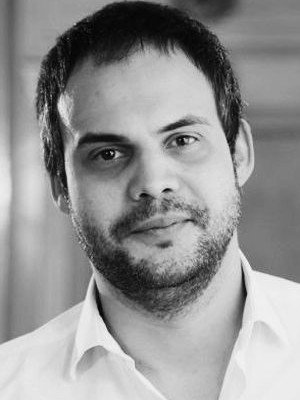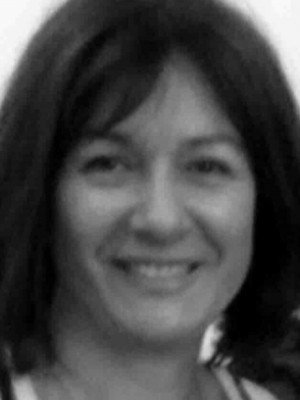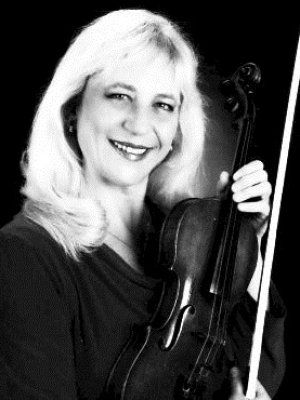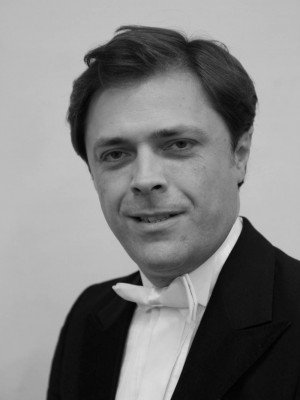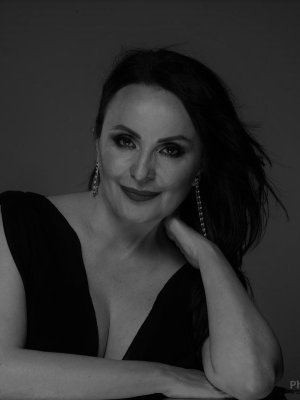Lucia di Lammermoor
opera by Gaetano Donizetti

Lucia di Lammermoor made it to the stage and, please, allow me to tell you the truth as your friend who shall speak without false modesty. It has pleased very much, if I can believe in the applause and the compliments I have received. I was called out many times, and a great many times the singers, too. Leopold, brother of His Royal Highness, was there and gave a long applause, as well as others, and gave many compliments to me… I will be very grateful, if you ask your friend Cerime to write about the news to Bergamo.
Gaetano Donizetti, Letter to Giovanni Ricordi, 29 September 1835
In competition with Bellini, being forced to put more effort in his work, he (Donizetti) produced his master-piece, the opera Lucia di Lammermoor (1835) that undoubtedly possesses dramatic force and beauty.
Josip Andreis, History of Music, Matica Hrvatska, 1942
(Lucia di Lammermoor) is an essential part of the repertoire of any opera house that possesses an excelent coloratura singer. Music literature still emphasises brilliant and light passages, bird flights in soprano heights of Adelina Patti, Melba, Tetrazzini, Amelita Galli-Curci in the leading role; and with no less appreciation for Caruso and Campanini in the role of Edgardo, who thought of the role as one of their best performances (…) Because, Lucia (…) is, first of all a “prima donna opera” and it represents an exam in singing technique and virtuosity of the leading role singer. It is one of the so-called melodic operas – that could have belonged to the period of Italian Romanticism – it possesses arias that come easy to the ear and liking, that “stick” to listeners, who memorize and hum them for a long time. In addition to these recommendations, Donizetti invested the most of his inventiveness and inspiration, in addition to his experience, into the opera.
Stana Đurić Klajn, Lucia di Lammermoor, The Politika Newspaper, 23 December 1956
As an accomplished melodist, Donizetti inspired Lucia with his quality of relentless melodic invention and, only owing to it, the opera possesses certain freshness that still impresses many opera admirers. Through primarily melodic profiles Donizetti gives individuality to characters on the stage, hints and emphasizes the plot, while, on the other hand, his orchestra, although it often has a subdued role, has moments when it, with simple means, accomplishes the strength of exquisite drama intensity or illustrates soft lyric “moods”. The complexity of sound of Donizetti’s musical score and its vocal and instrumental details resembles the sound of the next Verdi…
Mihailo Vukdragović, Lucia di Lammermoor…, The Borba, 20 December 1956
The plot of Lucia was taken from Walter Scott’s famous novel The Bride of Lammermoor, where he indirectly describes events taking place between the Ashton family and Lord Edgar Ravenswood. The events in Sir Walter Scott’s novel happened in 1689, at the time of conflict between supporters of William III of Orange and James II. (…) Opera was finalized on 6 July – it is the date written on the musical score – and it seems Donizetti started writing it at the end of May or beginning of June 1835. Lucia di Lammermoor confirms Donizetti as a grand opera composer. In comparison to his previous operas, it is characterized by two basic elements: consistency of inspiration and vocal requirements that never, or almost never, stoop to superficiality and banality. Donizetti had undoubtedly benefited from his cooperation with Cammarano, who had a talent of synthesis, which was the most important trait of librettists in the first half of the nineteenth century. Indeed, Scott’s novel as turned into libretto gains unique dynamics and typically melodramatic style. Emotions and confrontations are more severe and intensive than in Scott’s novel, while the characters, although broadly depicted, powerfully express desperate persons’ passions, much more so because Cammarano, wanting to follow certain traditional principles of musical theatre, did not hesitate to introduce adaptations. (…) Therefore, the place and time of plot seem completely irrelevant in comparison to music. (…) The music possesses such an evocative power that it can renounce everything specific of one place and one time. In addition, it manages to express desperate passions, so dear to romantic sensibility, without separating itself from lyric purity, the most valuable heritage of abstract and fairy-like melodrama of the eighteenth century.
Rodolfo Celletti, according to Vodič kroz operu by Djoakino Lanca Tomazi (transl. Radmila D.Mandic) Plavi krug, Beograd, 2008.
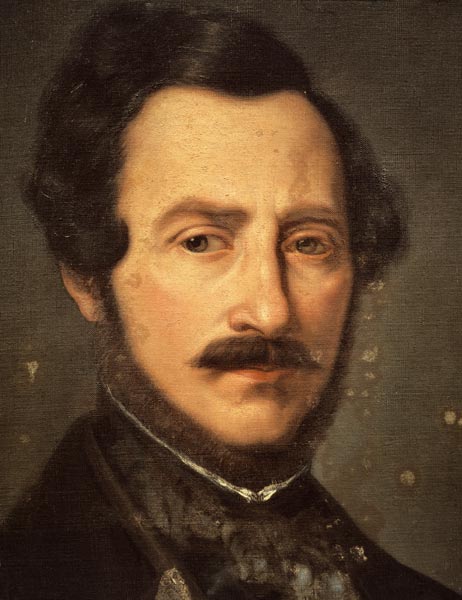 GAETANO DONIZETTI (1797-1848)
GAETANO DONIZETTI (1797-1848)
The youngest of three sons, Donizetti was born in 1797 in Bergamo. His family was very poor with no tradition of music, his father being the caretaker of the town pawnshop. Nevertheless, Donizetti received some musical instruction from Johann Simon Mayr, a priest at Bergamo’s principal church (and also himself a composer of successful operas). Donizetti was one of the first pupils to be enrolled at the Lezioni Caritatevoli school 1806, founded by Mayr, in Bergamo, through a full scholarship. His fourth opera, Zoraïda di Granata, impressed Domenico Barbaia, a prominent theatre manager, and Donizetti was offered a contract to compose in Naples. Writing in Rome and Milan in addition to Naples, Donizetti achieved some success (his 75 operas written in the space of just 12 years were usually popular successes, but the critics were often unimpressed), but was not well known internationally until 1830, when his Anna Bolena was premiered in Milan. He almost instantly became famous throughout Europe. L’elisir d’amore came soon after (1832), and is deemed one of the masterpieces of the comic opera, as is his Don Pasquale, written in 1843. Shortly after L’elisir d’amore, Donizetti composed Lucia di Lammermoor, based on the Sir Walter Scott novel The Bride of Lammermoor. It became his most famous opera, and one of the high points of the bel canto tradition, reaching а stature similar to Bellini’s Norma. As Donizetti’s fame grew, so did his engagements, as he was further hired to write in both France and Italy. In 1838, he moved to Paris. Donizetti’s wife, Virginia Vasselli, gave birth to three children, none of whom survived. Within a year of his parents’ deaths, his wife died from cholera. By 1843, Donizetti had become ill as well. After being institutionalized in 1845, he was sent to France, then back to Bergamo, his hometown, where he died in 1848. In the late 19th century his body was transferred to Bergamo’s Basilica of Santa Maria Maggiore near the grave of his teacher Johann Simon Mayr. Donizetti is best known for his operatic works, but he also wrote music in a number of other forms, including some church music, a number of string quartets, and some orchestral works.
According to: wikipedia.org
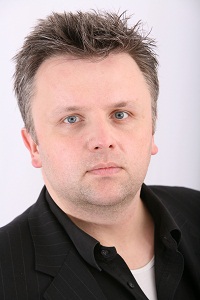 JOHN RAMSTER
JOHN RAMSTER
John is a director, writer and teacher. Born in the east of England, he studied History at Cambridge University and began his professional career twenty years ago as assistant to the late Clare Venables. An elected Honorary Associate of the Royal Academy of Music, he has been Professor of Drama for the Royal Academy Opera for the last eight years. A specialist in the training of younger artists, John has taught at all the London music conservatoires and has directed many shows for the Royal Academy Opera, the mainly baroque and twentieth century repertoire including operas by Britten, Mozart, Cavalli and Handel. Other productions include Hansel and Gretel and The Marriage of Figaro for Opera Theatre Company in Ireland; his productions for Opera Faber of L’elisir d’amore and Don Giovanni have been acclaimed in Portugal and Spain. In 2009, he directed the UK premiere of Ernest Bloch’s Macbeth at the London Bloomsbury Theatre for University College Opera. Most recently he has become known for his baroque gesture productions, directing Ariodante for the Cambridge Handel Opera Group and Il pastor fido for the London Handel Festival. He learned his trade as an opera director with the prestigious Glyndebourne Festival and the Royal Opera House, Covent Garden, assisting the world-famous directors Peter Sellars, Deborah Warner, Graham Vick, Trevor Nunn and Sir Peter Hall. He also worked as a young director in London’s West End on musicals and drama productions. John’s writing includes a novel entitled Ladies’ Man (published in seven foreign editions), some screenwriting work on British television dramas and comedies and he is the librettist of a song cycle by the English composer Samuel Quartermaine Smith about Queen Elizabeth I called Songs of Autobiography. He is delighted to be making his Balkan debut with this production of Lucia di Lammermoor.
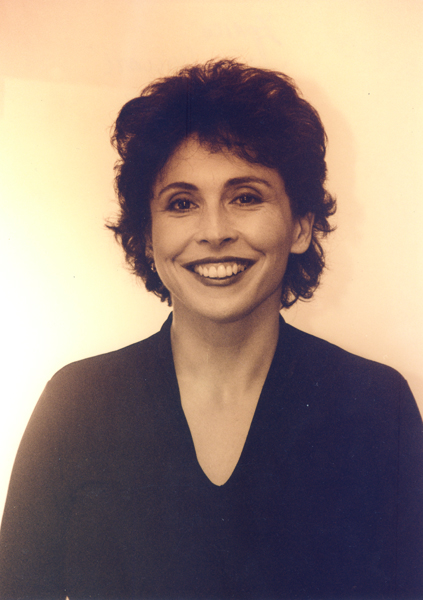 ZORICA MITEV VOJNOVIĆ
ZORICA MITEV VOJNOVIĆ
Zorica Mitev Vojnović graduated at two departments at the Faculty of Music in Belgrade; General Pedagogy of Music and Conducting in the class of Professor Živojin Zdravković, and has a post graduate in conducting in-class of professor Darinka Matić Marović. For excellent results during her studies at the Department of Conducting, she received October Prize of the City of Belgrade. She specialized in opera and orchestra conducting at the Prague Academy. She conducted for the women’s orchestra “Eho” (KUD “D. Tucovic”) and performed both nationally and internationally. In Essen (Germany) she recoded a concert of Yugoslav composers’ music for television. As a second conductor of Choir “Krsmanović – Obilić” and Women’s Choir “Collegium Musicum” she toured many countries (Italy, Germany, France, China, Mongolia, Russia, Greece, Bulgaria). Her opera debut was with Traviata production in Macedonian National Theatre, where she later performs as a guest artist on several occasions. Since 1989, she has been working as a conductor on all productions on repertoire of the National Theatre in Belgrade. She performs with Opera Company in the country and abroad (Corfu, Cyprus). She also conducted in the Serbian National Theatre’s Opera in Novi Sad. She also worked with: Men Choir KUD “Nikola Tesla”, Choir AKUD “Ivo Lola Ribar”, Opera Studio of the National Theatre, Belgrade Philharmonic Orchestra; symphony orchestras RTB-RTS, Yugoslav Army, Radio Television Podgorica, Niš Symphony Orchestra, Zagreb Philharmonic Orchestra, Macedonian Philharmonic Orchestra, International Young Players’ Symphony Orchestra – Groznijan (Slovenia), Symphony Orchestra of Pisek (Czech Republic). She worked with the following maestros: Pretre, Enrico de Mori, Palombo, Svetlanov, etc. Her conductor career has been enriched with pianist performances with soloists of Belgrade Opera. She also performed Bach as a cembalist. She produced concerts and opera performances of international and national composers as an expert associate of Music Programme of Radio Television Belgrade. She works as a full professor at the Academy of Fine Arts in Belgrade, lecturing on the subject Opera Studio.
Premiere performance
Premiere 29. May 2010
Main Stage
Tragic Opera in Three Acts
Libretto by Salvatore Cammarano, based on Sir Walter Scott’s novel
Director John Ramster, guest artist
Conductor Zorica Mitev Vojnović
Set Designer Boris Maksimović
Costume Designer Marina Vukasović Medenica
Lighting Designer Miodrag Milivojević
Video Production Petar Antonović
Assistant Directors, volunteers Stevan Marković and Aleksandar Nikolić
Assistant Conductor, volunteer Stefan Zekić
Graphic Designer for parts of décor Milica Maksimović
Premiere cast:
Lord Enrico Ashton Vladimir Andrić / Miodrag D. Jovanović
Lucia, his sister Sanja Kerkez / Snežana Savičić Sekulić
Sir Edgardo di Ravenswood Dejan Maksimović / Hun Lee
Lord Arturo Bucklaw Darko Đorđević / Igor Matvejev
Raimondo, chaplain Ivan Tomašev / Vuk Matić
Alisa, Lucia’s handmaid Iva Profaca* / Željka Zdjelar
Normanno, captain of Ravenswood’s guard Igor Matvejev / Darko Đorđević
Enrico’s wife Ivana Živadinović
Ghost Mirjana Dutina
Funeral procession, Enrico’s children, hunters, wedding guests, Enrico’s mercenaries, Arturo’s servants
*Member of Opera Studio “Borislav Popović”
The opera takes place in Scotland
Orchestra and Opera Choir of The National Theatre in Belgrade
Мembers of Children’s Choir „Horislavci“
Concert Master Edit Makedonska / Vesna Jansens
Chorus Master Đorđe Stanković
Solo Flute Bratislav Đurić / Vanja Đorđević
Solo Harp Milena Stanišić / Galina Kvasnevski Jakovljević
Music Associates Nevena Živković, Ivan Jovanović, Srđan Jaraković
Choir Music Associate Tatjana Ščerbak Pređa Stage Manager Ana Milićević
Prompter Silvija Pec
Libretto translation for subtitles: Konstantin Carina and Maja Janušić
Stage Master Zoran Mirić
Make-Up Designer Dragoljub Jeremić
Sound Designer Tihomir Savić
Assistant Costume Designers Olga Mrđenović, Marija Tavčar
Milliner Radica Komazec
Costume Modelists Drena Drinić, Radmila Marković
Shoe Modelist Milan Rakić
Sculpture Stanimir Pavlović, Vladimir Simović
YOUTUBE m2d8TNK9IrM
YOUTUBE 3_ewgByZILI







